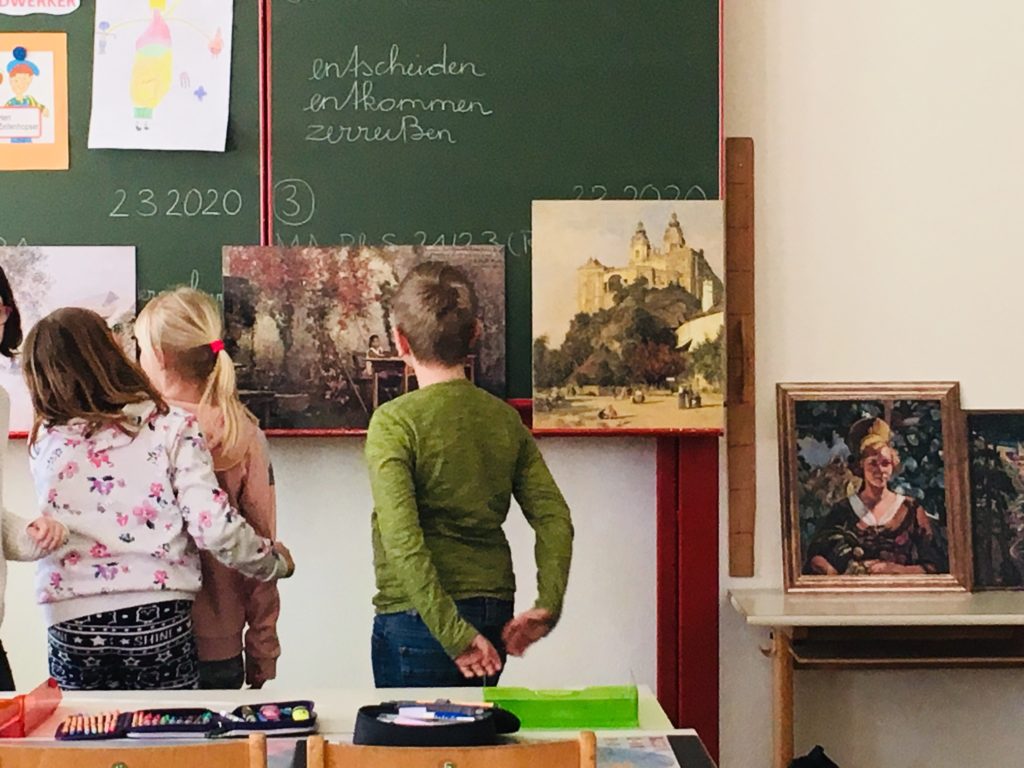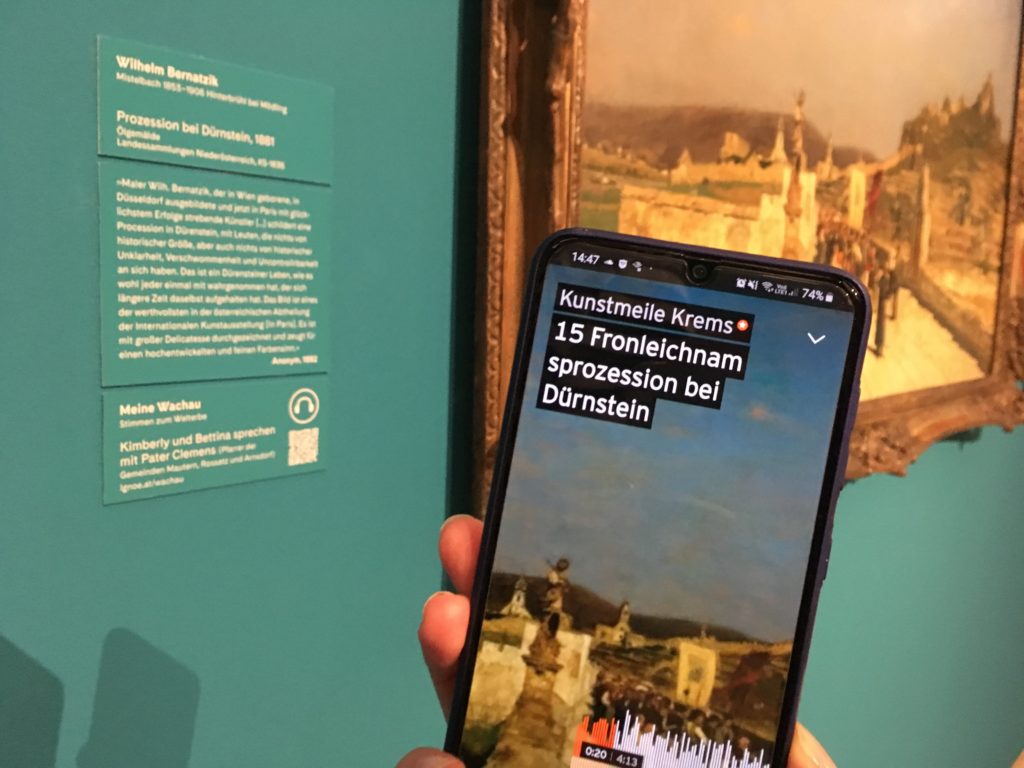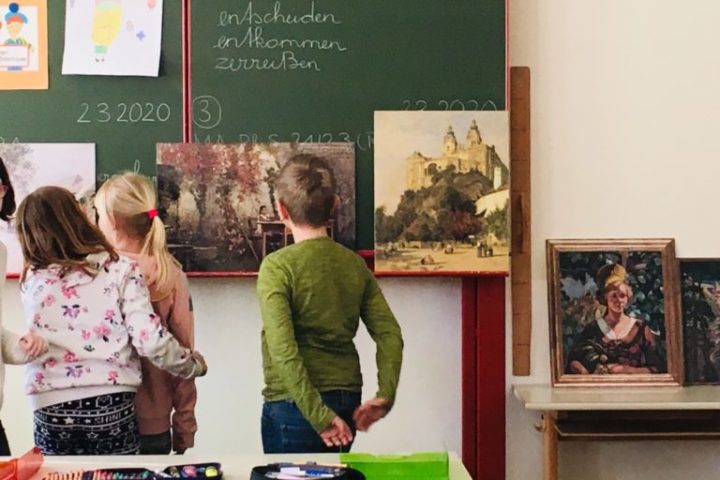
Isabell Fiedler
Head of Art Education | Visitor Service | Artothek Niederösterreich
Museums have no borders,
they have a network
October 14, 2020
To participate in our newest ICOM Voices
call for contributions, click here.
Keywords: Multiple voices; Co-creation; Community engagement; Audio guide.

How do children see the UNESCO World Heritage Area Wachau? What do they associate with it? The Education Department of the State Gallery of Lower Austria investigated this question on the occasion of the 20th anniversary of the UNESCO World Heritage Site Wachau in 2020, and an extensive art exhibition at the State Gallery of Lower Austria. The aim of the project is to integrate the voices of primary school children in the exhibition and add new interpretive and contextual layers to the art works. To achieve this, the children interviewed several experts about key art works in the show. The audio contributions are available online on the museum’s website and via QR code in the museum exhibition.
Integrating multiple voices in the museum narrative
The Education Department teamed up with a primary school in the World Heritage Area Wachau to produce an alternative audio guide for the exhibition Wachau. The Discovery of a World Heritage Site. In each episode, pupils interview one expert about a specific artwork in the exhibition. The experts include: the museum director, the curator of the exhibition, UNESCO and World Heritage managers, as well as local residents. The students lead the conversations and define what stories are told. Thus, the focus of attention is shifted from art historical details to questions such as ‘Why is there a hat on the floor and nobody picks it up?’, ‘Why did the artist paint a woman with a child?’ or ‘What is behind the brown stones?’

Project implementation in challenging times
Shortly after the project was launched on 2 March 2020, museums and schools in Austria were closed due to the COVID-19 pandemic. This posed a challenge for the Education team: How could the contact with the local community be sustained despite social distancing? How could co-creation be achieved while parents grappled with the double task of home working and home schooling? The commitment of the participating children to this project was the main motivator to find a solution. The decision to continue the project remotely required flexibility from all parties, and was implemented as follows:
Anchoring the exhibition in today’s world
The audio contributions anchor artworks from the past in the pupils’ lives and open up new levels of interpretation of the art works and the Wachau in general for museum visitors in both the analogue and digital museum space. This initiative fulfils the State Gallery of Lower Austria’s mission: to be a place for all people and their ideas, and to connect art to our everyday life.
The project was funded by ‘culture connected’, an Austria-wide initiative by the Federal Ministry of Education, Science and Research.
References and resources
State Gallery of Lower Austria:
Wachau. The Discovery of a World Heritage Site:
https://www.lgnoe.at/en/exhibitions/15-wachau
_________________
Opinions expressed in the article do not commit ICOM in any way and are the responsibility of its author.
To participate in our newest ICOM Voices call for contributions, click here.
